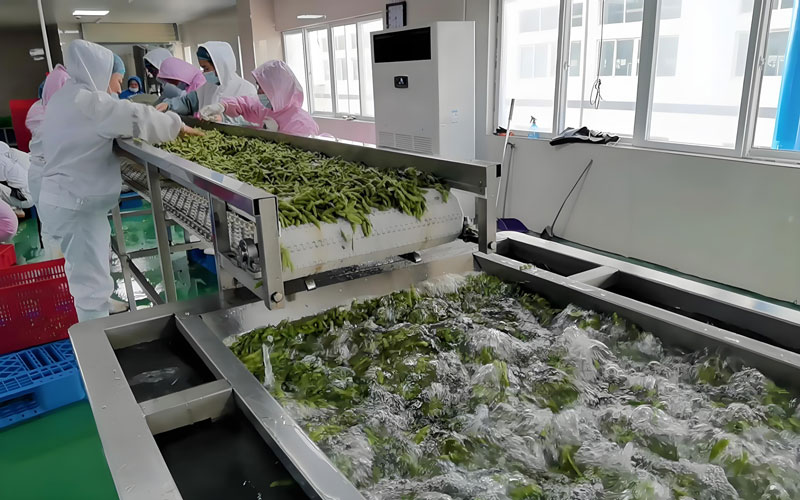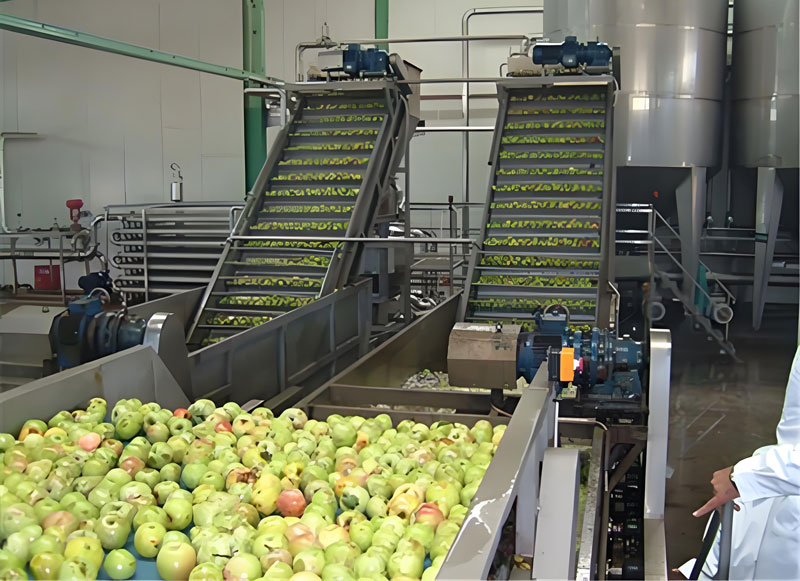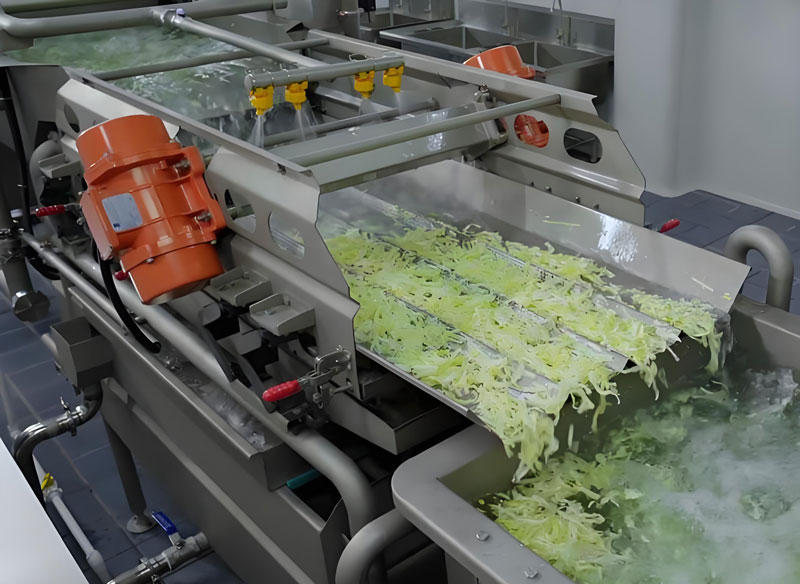Industry Overview
With the growing demand for healthy diets and convenient food among global consumers, the fruit and vegetable processing industry is experiencing rapid development. Whether it is fresh-cut produce, cold chain delivery, or deep-processed products such as fruit juices, jams, and frozen fruits and vegetables, companies need more efficient, hygienic, and controllable processing equipment to cope with market competition.
Traditional manual operations suffer from low efficiency, high costs, poor hygiene, and inconsistent product quality. Modern automated fruit and vegetable processing equipment is becoming a key tool for companies to upgrade their production lines and enhance their competitiveness.
Introduction to the entire process of the equipment








All fruit and vegetable processing equipment can be customized according to the customer’s plant layout, production capacity requirements, and processing techniques to achieve the most efficient workflow and energy utilization.
Pain Points & Solutions
Common Pain Points
- → Low manual efficiency and high labor costs
- → Food safety and hygiene risks
- → Inconsistent product quality
- → Short shelf life and high transportation losses
Our Solutions
- → Fully automated production lines to reduce reliance on manual labor, lower labor costs, and improve production efficiency.
- → Manufactured from food-grade stainless steel, with CIP (Clean-In-Place) systems to reduce cross-contamination and comply with international standards such as HACCP, ISO 22000, and CE.
- → Precision cutting equipment and PLC control systems to ensure consistent product specifications in every batch.
- → Modified atmosphere packaging (MAP), rapid cooling technology, and integration with cold chain distribution to extend shelf life and reduce losses.
Success Cases
Our equipment is trusted by top-tier restaurants, hotel chains, and catering businesses worldwide. Here are some detailed examples of how our solutions helped clients improve their operations:

Case 1: Large Cold Chain Distribution Center – Increased Daily Processing Capacity and Significant Reduction in Loss Rate
A large cold chain distribution company located in Southeast Asia was responsible for delivering fresh fruits and vegetables to hundreds of chain restaurants and supermarkets daily. Before the upgrade, the company relied heavily on manual cleaning and cutting, which led to high labor costs, low efficiency, and a product loss rate of over 8%.
We equipped them with a fully automated fruit and vegetable washing and cutting production line, which included high-pressure bubble washers, precision cutters, and automatic sorting systems. After the upgrade:
- Daily processing capacity increased to 20 tons, a 60% improvement from the original capacity.
- Loss rate dropped from 8% to 5.5%, equivalent to saving approximately 200 tons of raw materials per year.
- The appearance and neatness of the cuts of the processed products were significantly improved, leading to higher customer satisfaction.

Case 2: Export-oriented Juice Processing Plant – Compliance with International Food Safety Standards
The customer primarily exports concentrated juice to the European Union market, where the requirements for raw material washing, peeling, cutting, juicing, and sterilization processes are extremely high. The existing production line was aging, with low washing efficiency and insufficient pesticide residue removal rates, making it difficult to meet the EU food safety regulations.
We upgraded their entire juice processing production line:
- The washing stage adopted a multi-stage high-pressure spray combined with bubble washing, effectively removing soil and pesticide residues.
- The peeling and cutting equipment was integrated with PLC precise control to reduce flesh loss and increase juice yield.
- A pasteurization and aseptic filling system was installed to ensure stable and qualified microbial indicators in the finished products.
After the upgrade, the plant successfully passed HACCP and ISO 22000 audits and obtained EU export certification, with export order volumes increasing by 35%.

Case 3: Central Kitchen for Chain Restaurants – Enhancing Supply Chain Responsiveness and Product Consistency
The customer is a well-known domestic chain restaurant brand with central kitchens in multiple locations, supplying fresh-cut ingredients to hundreds of stores daily. Previously, they relied on manual processing, resulting in noticeable differences in cutting sizes and textures between batches, which affected product consistency.
We introduced a complete set of fresh vegetable processing equipment, including automatic washers, vegetable shredders and slicers, vacuum packaging machines, and rapid cooling devices.
- Processing efficiency increased by 45%, ensuring stable supply to stores during peak hours.
- Product specification consistency achieved a cutting precision of ±1mm.
- Shelf life extended to 3–5 days, reducing food waste in stores by 20%.
- The supply chain response speed was enhanced, allowing emergency orders to be processed and delivered within 6 hours.
Frequently Asked Questions
-
Low labor efficiency and high labor costs → Automation reduces reliance on manual work
-
Inconsistent product quality → Precision cutting and PLC control ensure uniform specifications
-
Short shelf life and high product loss → MAP packaging and rapid cooling extend freshness
-
Difficult cleaning and hygiene risks → CIP systems and quick-disassembly design improve sanitation management
-
High energy consumption → Optimized thermal energy recovery and power systems lower operating costs
